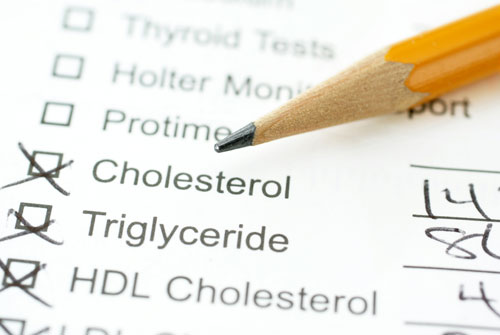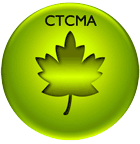High Cholesterol and Dietetics, Pt. 1
Sample

Western Biomedicine and TCM Theory
This course covers the diagnosis of treatment of hyperlipidemia (high cholesterol and triglycerides) according to western biomedicine and presents the Chinese medicine theoretical foundations concerning hyperlipidemia including diagnostics and treatment principles.
Outline
1. Hyperlipidemia in Western Medicine
1.1 Definition
1.2 Prevalence
1.3 Pathophysiology
1.4 Signs and Symptoms
1.5 Description of Lipoproteins
Characteristics of the Major Lipoprotein Classes
Characteristics of Lipoproteins:
1.6 Serum Lipid Levels
ATPIII Serum Lipid Level Classification (mg/dL):
1.7 Determining Risk
1.8 Therapeutic Options:
Effects of the major dyslipidemia drugs on serum lipid levels
1.9 Non-Mainstream Ideas about Cholesterol and Dyslipidemia
2. Hyperlipidemia in Chinese Medicine
2.1 Fundamentals of Dyslipidemia in Chinese Medicine
2.1.1 The Spleen and Dyslipidemia
Obstruction of Spleen Transportation is a Key Component in Dyslipidemia
Spleen Deficiency and Dyslipidemia in Modern Research
2.1.2 Liver and Dyslipidemia
Liver Qi Stagnation as a Factor in Dyslipidemia
Liver Qi Invading the Spleen
Liver Qi Deficiency as a Factor in Dyslipidemia
Liver Yin Deficiency and Deficiency Heat Scorching the Fluids as a Factor in Dyslipidemia
2.1.3 Kidney and Dyslipidemia
Kidney deficiency is a primary factor in the development of dyslipidemia
Kidney Yang Deficiency, Water Congealing and Becoming Phlegm
Kidney Yin Deficiency, Deficient Fire Scorching the Fluids
Kidney Essence Deficiency and Stagnation of Fat
Kidney Tonifying Medicinals and Dyslipidemia
Conclusion
About the author:
Dr. Greg Livingston is an advisor and contributing author for the Healthcare Medicine Institute. Dr. Livingston received his Ph.D. in Chinese Internal Medicine and the Clinical Application of Shang Han Lun at Zhejiang University of Chinese Medicine, China. He is one of the few westerners to have completed his Ph.D. in Chinese Medicine in China entirely in the Chinese language. Dr. Livingston has served as a Chinese Medicine Physician at the North American International Hospital, Hangzhou, China. He is a lecturer at Zhejiang University Medical School and is currently a Chinese Medicine Physician at the Shanghai East International Medical Center, Shanghai Pudong.
Excerpt of course material:
High Cholesterol and Dietetics, Pt. 1: SAMPLE SECTIONS
Introduction
Dyslipidemia affects millions of people worldwide, particularly in areas where fat-rich diets and sedentary lifestyles are prevalent, such as the United States, and is cause for concern due to the increased risk it poses for serious diseases such as atherosclerosis and coronary heart disease (CHD). While pharmaceutical drug-therapies to normalize serum lipid levels may be necessary in some cases, Chinese medicine offers preventative and remedial therapy options which are both safe and effective. This course aims to provide Chinese medicine practitioners with the fundamental knowledge needed to understand dyslipidemia from a biomedical perspective, and apply Chinese medicine herbal, dietary and lifestyle practices in the management of dyslipidemia patients.
1. Dyslipidemia in Western Medicine
1.1 Definition
Dyslipidemia is defined as disorder of lipoprotein metabolism, including lipoprotein overproduction or deficiency. Dyslipidemia may include elevated plasma concentrations of total cholesterol (TC), low-density lipoprotein cholesterol (LDL-C) and triglyceride, and a decrease in high-density lipoprotein cholesterol (HDL-C) and low-density lipoprotein plasma concentrations. Hyperlipidemia refers to higher than normal levels of plasma lipids, including cholesterol, cholesterol esters, phospholipids, and triglycerides. All of these lipids are transported in the plasma bound to proteins, and these larger compound molecules are called lipoproteins. Lipoproteins have been classified on the basis of their densities into five major classes:
• chylomicrons
• very low-density lipoproteins (VLDL)
• intermediate-density lipoproteins (IDL)
• low-density lipoproteins (LDL)
• high-density lipoproteins (HDL)
When hyperlipidemia is defined in terms of elevated serum lipoproteins, the term hyperlipoproteinemia is used. Higher than normal serum cholesterol is termed hypercholesterolemia, and higher than normal serum triglyceride is termed hypertriglyceridemia. The main risk associated with dyslipidemia is atherosclerosis and subsequent increased risk for coronary heart disease (CHD) and other vascular diseases.
1.2 Prevalence
In recent years there are many studies showing direct correlation between incidence of coronary heart disease (CHD) and elevated total and LDL cholesterol levels. According to the third report of the Adult Treatment Panel (ATP III), issued by the National Cholesterol Education Program (NCEP) in May 2001, each year approximately 1.5 million Americans experience an acute myocardial infarction (MI), and one-third of them do not survive. Adoption of NCEP guidelines for the management of dyslipidemia means many more patients are now candidates for intensive lipid-lowering therapy. The NCEP estimated that under its 2001 guidelines, the number of Americans qualifying for dietary treatment would rise from 52 million to 65 million, and the number of candidates for drug therapy would nearly triple—from 13 million to 36 million.
1.3 Pathophysiology
The main risk of dyslipidemia is atherosclerosis (the leading cause of death and disability in the developed world) and the ensuing risk atherosclerosis poses for coronary heart disease (CHD), myocardial infarction (MI), cerebrovasular accident (CVA), peripheral arterial disease, carotid artery disease, abdominal aortic aneurysm (AAA), etc. Atherosclerosis is a subset of arteriosclerosis (hardening of the arteries), and is the formation of atheromas (fibrous fatty intimal plaques) in arterial walls. The exact pathogenesis of atherosclerosis is controversial and complex, but a simplified explanation is as follows:
Atherosclerosis begins when monocytes congregate on arterial walls in response to lipoprotein oxidation, creating a fatty streak (yellow streak of lipid-filled macrophage foam cells) on the arterial wall. The monocytes leave the bloodstream and enter the arterial intima where they become macrophages. The macrophages then phagocytize the oxidized LDL cholesterol and die, thus contributing to the lipid component of the fatty streak. Fatty streaks represent the initial lesion of atherosclerosis, are asymptomatic, and are present in the aorta and coronary arteries of most individuals by age 20.
As the fatty streak evolves into a more complicated atherosclerotic lesion, smooth-muscle cells accumulate within the expanding intima and the amount of extracellular matrix increases. Thus begins the formation of the fibrous cap, which separates a necrotic core of cellular debris, degenerating foam cells, and cholesterol crystals from the arterial lumen. The plaque eventually calcifies, thus stiffening and increasing the fragility of the blood vessel.
The endothelium plays a major role in the pathophysiology of atherosclerosis. Endothelial cells normally provide a permeability barrier, reduce clotting, and regulate vascular tone. In atherosclerosis, the intimal endothelium becomes dysfunctional, loses its ability to produce nitrous oxide (NO), and expresses selectins/integrins for leukocyte recruitment. NO is a vasoprotective gas released by the endothelium which has vasodilatory, anti-thrombotic, and anti-inflammatory effects. NO activates guanylate cyclase to generate cGMP, which causes smooth muscle dilation. NO also blocks vascular inflammation by inhibiting endothelial release of inflammatory granules, and blocks platelet aggregation. Endothelial cells lose their ability to produce NO due to the presence of inflammation, toxins, atherosclerosis, or oxidized LDL.
Atherosclerosis is an inflammatory disease, which is why levels of C Reactive Protein closely correlate with and predict MI. LDL cholesterol, cigarettes and other toxins initiate vascular inflammation, damage the endothelium, and activate macrophages.
Atherosclerosis leads to vascular occlusion when the plaque ruptures or ulcerates, exposing thrombogenic material and leading to the formation of a blood clot, or thrombus. The thrombus may block the artery, causing MI or CVA, or it may become incorporated into the plaque, enlarging its size. Atherosclerotic dysfunction of the endothelium prevents NO production, inhibiting vasodilation and further aggravating the occlusion. Additionally, embolization may occur if pieces of the plaque, called atheroma, break off and become lodged in distal sites.
In the heart, increased plaque volume causes arterial remodeling, which results in an outward expansion of the coronary arteries. The arteries expand in an effort to overcome the effects of the blockage, allowing blood to flow through the stenosed arterial segment. This expansion continues until the artery reaches its maximum point of flexibility and can no longer accommodate the continued growth of the plaque. This threshold generally occurs when the arterial stenosis reaches 40%. As the plaque ages, an increasing amount of fibrous tissue accumulates, leading to the formation of a fibrous cap, which is vulnerable to rupture. Progressive arterial stenoses eventually lead to ischemic vascular disease, and the rupture of a plaque can cause a myocardial infarction.
1.4 Signs and Symptoms
The primary clinical manifestations of dyslipidemia are ischemic vascular disease, pancreatitis, and xanthomatosis. The major ischemic vascular diseases are atherosclerosis, coronary heart disease, peripheral vascular disease, and cerebrovascular disease. Pancreatitis may be associated with hypertriglyceridemia. Xanthomas are tumor-like collections of lipids (triglycerides and cholesteryl esters) that can arise in the tendons, points of continued trauma, legs, knees and elbows, as well as palms.
1.5 Description of Lipoproteins
Lipoprotein Structure
Lipoproteins are spherical particles made up of hundreds of lipid and protein molecules, yet they are smaller than red blood cells. The major lipids of the lipoproteins are cholesterol, triglycerides, and phospholipids. Triglycerides and cholesterol esters are nonpolar, hydrophobic lipids that make up the core of the lipoproteins. Phosphoplipids and a small amount of unesterified cholesterol cover the surface of the lipoproteins, where they act as the interface between the plasma and core components. A family of proteins, known as apolipoproteins, also occupies the surface of the lipoproteins and plays an important role in the regulation of lipid transport and lipoprotein metabolism.
LDL Cholesterol (LDL-C)
LDL cholesterol typically accounts for 60-70% of total serum cholesterol. LDL is the main atherogenic lipoprotein and is the primary target of cholesterol-lowering therapy. The focus on LDL reduction has been strongly validated in recent years by clinical trials that show the efficacy of LDL-lowering therapy in reducing CHD risk. However, recent studies have also shown the significance of LDL particle size in relation to atherosclerosis and heart disease. Smaller, denser LDL carries more atherogenic potential than larger, less dense LDL particles.
HDL Cholesterol (HDL-C)
HDL cholesterol typically accounts for 20-30% of total serum cholesterol. HDL cholesterol levels are inversely correlated to CHD risk. However, recent studies have shown that very high levels of HDL (=70 mg/dL), and very large HDL particle size, are both associated with increase CHD risk. Furthermore, while some evidence suggests that HDL protects against development of atherosclerosis, a low HDL level often reflects the presence of other atherogenic factors.
VLDL Cholesterol (VLDL-C)
VLDL are triglyceride-rich lipoproteins which contain between 10-15% of total serum cholesterol. VLDL are produced by the liver and are precursors of LDL. Some forms of VLDL appear to be atherogenic, particularly VLDL remnants, which consist of partially degraded VLDL and are relatively enriched in cholesterol ester. Technically, IDL belong to these remnant lipoproteins, but IDL is included in the measurement of serum LDL.
Chylomicrons
Chylomicrons are triglyceride-rich proteins formed in the intestine from dietary fat, and which appear in the blood after a fat-containing meal. Partially degraded chylomicrons, known as chylomicron remnants, may also be atherogenic. See charts and more in actual course material..... continue to see more samples of the course material.
1.6 Serum Lipid Levels
ATP III classified levels of serum lipids as described below. However, the actual desirable level (goal) for each individual varies depending on risk factors for CHD, and is calculated using ATP III guidelines and the Framingham Point Score tables. Therefore, the following levels are merely a rough guideline and not applicable to all individuals.
Total Cholesterol
Elevated total cholesterol is associated with increased risk of CHD. A total cholesterol level under 200 mg/dL is desirable, while a level of 200 to 239 mg/dL is borderline high, and greater than or equal to 240 mg/dL is high. However, most decisions about treatment are based upon levels of LDL or HDL cholesterol rather than total cholesterol.
LDL Cholesterol
Low-density lipoprotein (LDL) cholesterol is a more accurate predictor of CHD risk than total cholesterol, and higher LDL cholesterol concentrations are associated with increased incidence of CHD in a large number of studies.
LDL concentrations as low as 25 to 60mg/dL are physiologically sufficient. Baseline LDL levels under 100mg/dL are considered acceptable and not requiring of further LDL lowering therapies. However, individuals in this category should still follow dietary and lifestyle recommendations (TLC- Therapeutic Lifestyle Changes) that will allow for maintenance of low LDL levels.
According to ATPIII, baseline LDL cholesterol levels between 100-129 mg/dL require therapeutic intervention. Several options are available, but as in all cases of elevated cholesterol, TLC is the initial therapy. If healthy LDL levels are attained on dietary therapy alone, the use of lipid-lowering drugs may be unnecessary. If LDL remains above 100 mg/dL after 3 months of maximum dietary therapy, an LDL-lowering drug may be considered. If elevated triglyceride levels or low HDL levels are also present, another lipid-lowering drug may be considered, such as nicotinic acid or fibric acid.
For baseline LDL cholesterol levels =130 mg/dL, use of an LDL-lowering drug is generally considered necessary to achieve LDL cholesterol levels <100 mg/dL.
Increased LDL levels may result from the following:
1. Primary hyperlipoproteinemia
2. High fat diet
3. Acute myocardial infarction
4. Obstructive liver disease (primary biliary cirrhosis)
5. Hypothyroidism
6. Nephrotic syndrome
7. Diabetes mellitus
8. Anabolic steroid use
9. Medications
10. Progestins
11. Thiazide diuretics
Decreased LDL cholesterol levels may result from any of the following:
1. Abetalipoproteinemia
2. Advanced liver disease
3. Malnutrition
LEARN MORE IN THE COURSE MATERIAL.....







